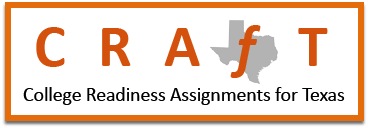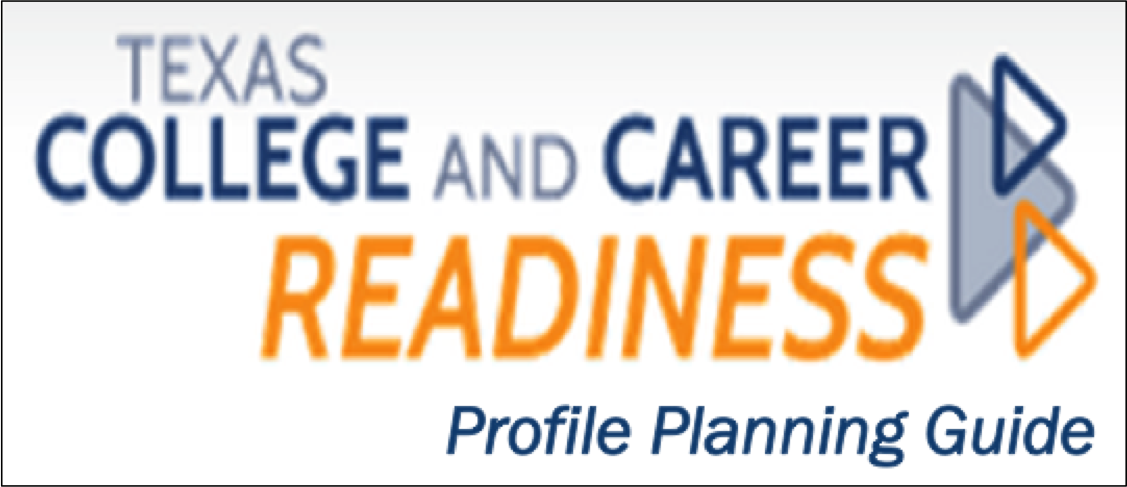VIII. Physics
![]() VII. Chemistry IX. Earth and Space Science
VII. Chemistry IX. Earth and Space Science![]()
A. Matter
1. Demonstrate familiarity with length scales from sub-atomic particles through macroscopic objects.
a. Compare order of magnitude estimates for metric sizes of a variety of objects (e.g., atomic nucleus, atom, molecule, grain of sand, pinhead, fingernail, baseball, city, state, country, planet, star).
2. Understand states of matter and their characteristics.
a. Describe the states of matter in terms of volume, shape, and cohesive strength.
b. State the physical changes associated with a change in phase.
3. Understand the concepts of mass and inertia.
a. Describe the concept of mass as a measurement of inertia.
b. Compare order of magnitude estimates for masses of a variety of objects (e.g., electron, grain of sand, pebble, baseball, person, car, planet, star).
4. Understand the concept of density.
a. Define density as the ratio of mass to volume. Apply the definition to calculate mass, volume, or density given two of the three quantities.
b. Calculate density of a homogeneous material and use it to identify the material.
5. Understand the concepts of gravitational force and weight.
a. Qualitatively and quantitatively describe Newton’s Law of Gravitation and the factors that affect the gravitational force between two objects.
b. Describe weight as a force of attraction to a large body and make computations of weight (using W=mg).
c. Give examples to differentiate between mass and weight.
B. Vectors
1. Understand how vectors are used to represent physical quantities.
a. State several examples of scalar quantities.
b. State several examples of vector quantities.
c. Convert a numerical vector quantity (magnitude and direction) into a graphical vector representation.
2. Demonstrate knowledge of vector mathematics using a graphical representation.
a. Resolve a vector quantity (magnitude and direction) into perpendicular components using paper, a ruler, and a protractor.
b. Add and subtract various vectors using paper, a ruler, and a protractor.
3. Demonstrate knowledge of vector mathematics using a numerical representation.
a. Resolve a numerical vector quantity (magnitude and direction) into perpendicular components using trigonometric functions and a calculator.
b. Add and subtract various vectors using trigonometric functions and a calculator.
C. Forces and motion
1. Understand the fundamental concepts of kinematics.
a. State the definitions for displacement, distance, velocity, speed, and acceleration.
b. Solve problems involving displacement, distance, velocity, speed, and acceleration.
c. Solve one-dimensional kinematics problems for the case of constant acceleration.
d. Create and interpret graphs of one-dimensional motion (e.g., position vs. time, velocity vs. time).
e. Describe two-dimensional trajectory motion qualitatively and quantitatively.
f. Describe the concept of relative motion and define a frame of reference.
2. Understand forces and Newton’s Laws.
a. State Newton’s Laws of Motion and demonstrate understanding of their application through lab activities.
b. Solve for an unknown quantity using Newton’s Second Law and the concept of equilibrium.
c. Distinguish qualitatively between static and kinetic friction, and describe their effects on the motion of objects.
3. Understand the concept of momentum.
a. Define and calculate momentum and impulse. Clearly indicate how momentum is a vector.
b. State the conditions under which momentum is conserved.
c. Describe the term “impulse” in terms of force, time, and momentum. Illustrate the principle of impulse by citing several examples.
d. Solve problems using impulse and the conservation of momentum.
D. Mechanical energy
1. Understand potential and kinetic energy.
a. Calculate potential energy values for various types of potential energy (gravitational, elastic, electrical).
b. Calculate kinetic energy values (translational, rotational).
c. Using a diagram of a pendulum or another energy conserving system, identify potential and kinetic energy at various locations.
2. Understand conservation of energy.
a. Describe the conversion of potential energy into kinetic energy (and vice-versa) in closed systems for which only conservative forces are present.
b. Describe the conversion of energy in systems in which dissipative forces are present.
c. Describe the general conservation of energy.
3. Understand the relationship of work and mechanical energy.
a. Compute net work as the product of net force and displacement, as the change in kinetic energy, and as the negative change in potential energy.
b. Describe the concept of power and calculate average power.
c. Distinguish between energy and power qualitatively, and state the dimensional units for each.
E. Rotating systems
1. Understand rotational kinematics.
a. Describe the relationships between the concepts and equations used for translational motion and those used for rotational motion.
b. Define qualitatively: angular displacement, angular velocity, and angular acceleration.
c. Complete computations including angular displacement, angular velocity, angular acceleration, tangential acceleration, and centripetal (radial) acceleration.
d. Use examples to illustrate differences between tangential acceleration and centripetal (radial) acceleration.
e. Explain why a net force (called centripetal) is required in order for an object to move in a circular path.
2. Understand the concept of torque.
a. Describe the concept of torque and compute torque values for various situations.
b. Describe the concept of moment of inertia and compute moment of inertia values for various objects.
c. Perform calculations using Newton’s Second Law of Motion as applied to rotation.
3. Apply the concept of static equilibrium.
a. Describe the two conditions for which an object is in static equilibrium.
b. Construct an equation using the concept of static equilibrium and solve for an unknown quantity.
4. Understand angular momentum.
a. Describe the concept of angular momentum.
b. Describe changes in angular velocity when moment of inertia changes.
F. Fluids
1. Understand pressure in a fluid and its applications.
a. Define pressure and make basic pressure computations using pressure=force/area in appropriate units.
b. Describe qualitatively and quantitatively how the pressure in a fluid changes with depth and explain the physical basis for the relationship.
c. Describe the cause of atmospheric pressure and its variations.
2. Understand Pascal’s Principle.
a. Describe and calculate changes in fluid pressure when external pressure is applied, especially as observed in hydraulic systems.
b. Show how Pascal’s Principle applies to hydraulic systems and calculate forces on both sides of a hydraulic system.
3. Understand buoyancy.
a. Define buoyant force and state Archimedes’ Principle.
b. Draw all the forces acting on an object submerged in a fluid. Discuss the conditions for sinking and floating in terms of the forces in the diagram.
4. Understand Bernoulli’s principle.
a. Qualitatively describe the relationship between fluid speed and fluid pressure in a closed system.
G. Oscillations and waves
1. Understand basic oscillatory motion and simple harmonic motion.
a. Identify examples of oscillatory motion.
b. Recognize examples of simple harmonic motion.
2. Understand the difference between transverse and longitudinal waves.
a. Describe the motion of the medium as compared to the wave motion for both transverse and longitudinal waves.
3. Understand wave terminology: wavelength, period, frequency, and amplitude.
a. Perform computations using the formula (wave speed)=(wavelength)*(frequency).
b. Describe wavelength, period, frequency, and amplitude, and identify each from various wave graphs.
4. Understand the properties and behavior of sound waves.
a. Describe the properties and behavior of sound including compressions, rarefactions, and travel through various media.
b. Compare and contrast sound and electromagnetic waves in terms of wave speed, wave type, wavelength, frequency, and medium.
c. Describe the apparent change in frequency of waves due to the motion of a source or a receiver (the Doppler Effect).
H. Thermodynamics
1. Understand the gain and loss of heat energy in matter.
a. Describe, qualitatively and quantitatively, the relationship between heat and change in temperature, including the effects of mass and specific heat.
b. Identify and compute the energy involved in changes of state.
c. Explain the relationships among evaporation, condensation, cooling, and warming.
d. Describe the transfer of heat by conduction, convection, and radiation.
2. Understand the basic laws of thermodynamics.
a. State and describe the laws of thermodynamics.
b. Describe qualitative applications of the laws of thermodynamics and relate each to the concept of conservation of energy.
I. Electromagnetism
1. Discuss electric charge and electric force.
a. Describe electrical repulsion and attraction.
b. State Coulomb’s Law and use it to compute electrical force.
c. Describe the concept of an electric field.
2. Gain qualitative and quantitative understandings of voltage, current, and resistance.
a. Describe the concept of electric potential.
b. Describe the concept of electrical charge flow and what limits that flow.
c. Describe the concept of electrical resistance to charge flow.
3. Understand Ohm’s Law.
a. Solve for unknown quantities using Ohm’s Law.
b. Determine electrical resistance from graphs of voltage versus current.
4. Apply the concept of power to electricity.
a. Define electrical power as the product of current and voltage; perform simple calculations of power consumption.
5. Discuss basic DC circuits that include voltage sources and combinations of resistors.
a. Summarize the electrical characteristics (current, voltage, total resistance) of a circuit consisting of two or more resistors wired in series.
b. Summarize the electrical characteristics (e.g., current, voltage) of a circuit consisting of two or more resistors wired in parallel.
c. Compare the electrical characteristics (e.g., current, voltage) of a circuit consisting of two or more resistors wired in parallel with those of the same components wired in series.
6. Discuss basic DC circuits that include voltage sources and combinations of capacitors.
a. Describe what a capacitor is and how it works.
b. Summarize the electrical characteristics (e.g., current, voltage) of a DC circuit consisting of a battery and a capacitor.
c. Summarize the electrical characteristics (e.g., current, voltage) of a DC circuit consisting of a capacitor and a resistor wired in series.
7. Understand magnetic fields and their relationship to electricity.
a. Describe the force experienced by a moving electric charge in a magnetic field.
b. Describe moving electrical charge as the source of magnetic fields.
c. Describe Faraday’s Law and Lenz’s Law.
d. Describe the source of magnetism in matter.
e. State the law of magnetic poles.
8. Relate electricity and magnetism to everyday life.
a. Explain how an electric motor works. State which electromagnetic laws or principles govern the workings of a motor.
b. Explain how an electric generator works. State which electromagnetic laws or principles govern the workings of a generator.
c. Make quantitative predictions of whether or not a circuit breaker will “trip” when a variety of electrical appliances are in use.
J. Optics
1. Know the electromagnetic spectrum.
a. Discuss the regions of the electromagnetic spectrum, including radio waves, microwaves, infrared, visible, ultraviolet, x-rays, and gamma rays.
b. Discuss visible light as part of the electromagnetic spectrum. Emphasize that light is an electromagnetic wave.
c. Recognize that electromagnetic waves are transverse waves and travel at the speed of light through a vacuum.
d. Compare and contrast transmission, reflection, and absorption of radiation.
2. Understand the wave/particle duality of light.
a. Describe the behavior of light and why scientists have chosen to model it as both a particle and a wave.
b. Give a practical example that illustrates light acting as a wave. Give a practical example that illustrates light acting as a particle.
3. Understand concepts of geometric optics.
a. Predict the path of a reflected light ray by applying the law of reflection to both diffuse and specular reflection.
b. Define index of refraction. Predict the path of a light ray through a transparent material by application of Snell’s Law.
c. Identify convex, concave, and plane mirrors.
d. Identify convex and concave lenses.
e. Discuss qualitatively the images formed by mirrors and single lenses.
f. Discuss qualitatively the images formed by combinations of mirrors and lenses (e.g., telescopes, microscopes, cameras).


 Show Printable Version
Show Printable Version




